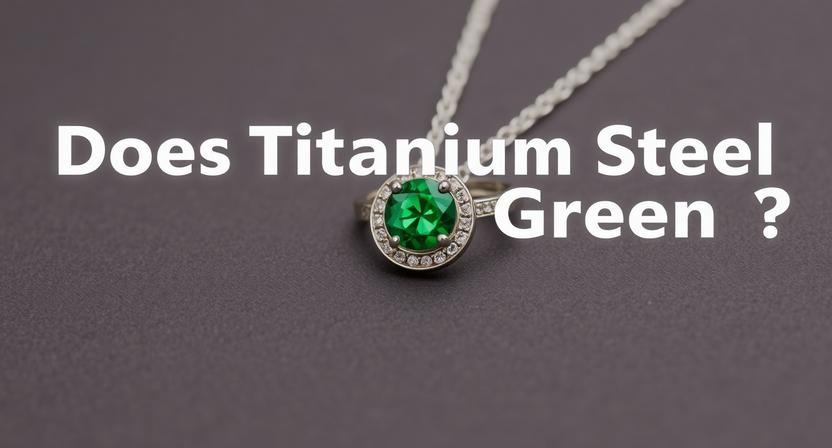
The allure of titanium steel jewelry is undeniable—it's sleek, durable, and often comes with an attractive price tag. But a common concern plagues potential buyers: Does titanium steel turn green? This question stems from frustrating experiences with other metals that leave an unsightly green or black mark on the skin. The short answer is overwhelmingly no, but the full explanation requires a deeper look into what "titanium steel" truly is and why it stands apart from the metals that cause discoloration.
The term "titanium steel" is often a marketing term used in the jewelry industry. It typically refers to one of two materials, both of which are excellent choices for avoiding the dreaded green stain:
This is the most common material sold as "titanium steel." 316L stainless steel is an alloy of iron, chromium, and nickel (though the nickel is tightly bound and rarely causes issues). Its key feature is its exceptional corrosion resistance. It does not easily oxidize or react with the natural oils, sweat, or lotions on your skin.
Less common, but sometimes the term refers to actual titanium (Ti) or a titanium alloy like Ti-6Al-4V (Grade 5). Pure titanium is a non-reactive, hypoallergenic element known for its incredible strength and lightness.
The green discoloration on your skin is not a sign of poor hygiene; it's a chemical reaction called oxidation. This happens when the metal in your jewelry reacts with the moisture, acidity (pH), and chemicals (like sulfur compounds) present in your sweat, lotions, or perfumes.
The metals most notorious for causing this reaction are:
Copper: The primary culprit. When copper oxidizes, it forms a compound called copper carbonate, which is blue-green and easily transfers to the skin.
Brass and Bronze: These are copper alloys and will also turn green.
Low-Quality Alloys: Jewelry with a thin plating over a copper or brass core will eventually expose the base metal, leading to discoloration.
Titanium steel, whether it's 316L stainless steel or pure titanium, resists this oxidation process for two main reasons:
Inherent Corrosion Resistance: Both materials are highly stable. Pure titanium is naturally non-reactive, and 316L stainless steel forms a thin, protective layer of chromium oxide on its surface when exposed to air. This layer acts as a shield, preventing the underlying metal from reacting with your skin's moisture and chemicals.
Absence of Free Copper: High-quality titanium steel jewelry does not contain the free copper that is necessary to create the green copper carbonate compound.
While the base titanium steel metal will not turn green, there is one important caveat: Plating.
If your titanium steel jewelry has a gold, rose gold, or black PVD (Physical Vapor Deposition) coating, the coating itself is durable and should not turn green.
However, if the jewelry is cheaply made and uses a thin, low-quality plating over a base metal that isn't titanium steel (e.g., a copper alloy), that plating will eventually wear off, exposing the reactive metal underneath and causing the green stain.
To guarantee your titanium steel jewelry remains tarnish-free and never turns your skin green, follow these simple care tips:
Look for 316L or Pure Titanium: Always confirm the material grade. Reputable sellers will specify "316L Stainless Steel" or "Pure Titanium."
Avoid Contact with Harsh Chemicals: While resistant, prolonged exposure to chlorine (in pools), strong cleaning agents, or excessive perfumes can degrade the surface finish over time.
Clean Regularly: A quick wipe with a soft cloth after wearing will remove any sweat or oil residue, keeping the metal's surface clean and bright.
Store Properly: Keep your jewelry in a dry, cool place, ideally in a separate pouch or box to prevent scratches.
For those seeking durable, hypoallergenic, and maintenance-friendly jewelry, titanium steel is an excellent choice. You can wear your titanium steel rings, necklaces, and bracelets with confidence, knowing that the high-grade material is engineered to resist the oxidation that causes skin discoloration. Titanium steel does not turn green. Focus on purchasing from reputable sources to ensure you are getting genuine, high-quality material.